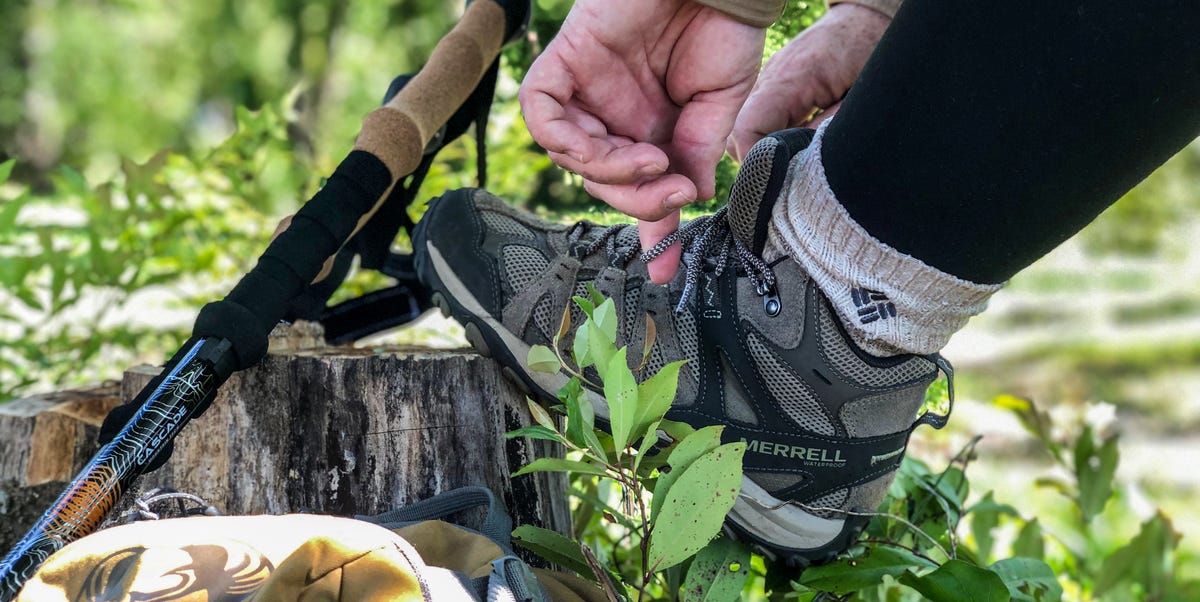How Outdoor Clothes Keep Ticks Away
There are several ways that clothes can help prevent ticks from biting you. Some involve treating clothes with chemicals, like bug spray. Others revolve around the design and construction of a garment: mesh, specialized, or dual-layered materials to keep insects from biting through.
When picking the top tick-repellent clothing, I look for garments that feature chemical treatments, technical fabrics, and ample skin coverage. Each feature can make a dramatic difference when you encounter ticks. No single option always works, so combining two or more features is the best defense to keep you safe and comfortable outdoors.
Chemical Fabric Treatments
My picks include brands that rely on a third-party company called Insect Shield, a proprietary manufacturer of insect-repellent clothing. The primary ingredient in Insect Shield (or any insect-repellent treatment for clothing) is permethrin. This broad-spectrum synthetic pyrethroid insecticide acts like natural extracts from the chrysanthemum flower and kills insects, including ticks, and is a repellent when applied to clothing.
Chrysanthemum plants produce a natural chemical called pyrethrum, a neurotoxin that kills a variety of insects and Permethrin is a synthetic insecticide derived from that. It was first registered with the Environmental Protection Agency (EPA) in 1979, and re-registered in 2006. The EPA deemed clothes factory-treated with permethrin are safe to wear against your skin, and the product is even used on pets, on feed crops, and in places where food is handled.
It is safe for people and most pets, but when an insect comes in contact with the chemical, it affects the insect’s nervous system instantly and causes paralysis, muscle spasms, and death.
Unlike sprays and other repellents, permethrin-coated clothing is odorless and doesn’t irritate most people’s skin. It also stays active all day, so you don’t need to worry about reapplying like you would with a spray. Of course, these clothes invariably expose some skin, but they do provide a strong base layer of protection.
Technical Fabrics
I look for outdoor clothing made from synthetic or “technical” fabrics like nylon, Lycra, rayon, polyester, and spandex for hiking, hunting, and fishing. These fabrics are often lighter and more breathable than cotton, linen, or cotton blends, and can help to prevent insect bites. For example, layered nylon and Lycra mesh have a tightly woven structure that even small insects will struggle to bite through.
Technical fabrics can also have more benefits than just repelling ticks. Many of the garments I recommend here feature materials with moisture-wicking properties which pull sweat away from the skin, allowing air to circulate and dry the sweat from the fabric.
Other fabrics provide sun protection, as indicated by their Ultraviolet Protection Factor, or “UPF,” which absorbs UV radiation to reduce the damaging effects of the sun on your skin.
Maximum Skin Coverage
While no product can guarantee complete protection from tick bites, the most effective way to keep ticks away is to cover up as much skin as possible to avoid exposure to them.
That said, in the southern regions of North America and foreign continents with warmer and wetter climates, where there are typically higher numbers of ticks and biting insects, these higher temperatures also make it unbearable to cover all of your skin completely.
Adding garments and accessories with insect-repelling properties will provide an extra safeguard in efforts to avoid tick and insect bites. Outdoor wear designed to protect from insects often incorporates extra design features to cover skin that casual outerwear would typically expose, such as fitted wrist cuffs, elastic pant hems, or fitted neck and waist openings, all to maximize protection.
link

